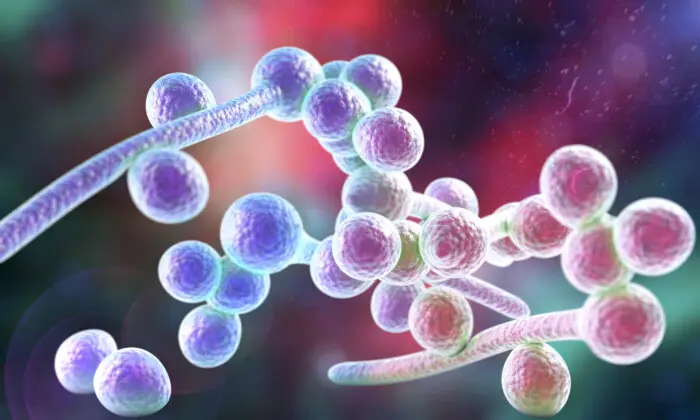Addressing fungal infections may offer a novel means to help prevent cancer in the immunocompromised.

Some researchers are looking for innovative ways to fight cancer. One novel approach may involve addressing fungal infections.
According to a 2021 study published in Advanced Pharmaceutical Bulletin (APB), epidemiological evidence shows a clear link between fungal infections and cancer development. Researchers frequently find this association in people who are immunocompromised, such as those with AIDS.
Why Might the Connection Between Cancer and Fungal Infections Be Relevant?
In 2018 18.1 million new cases of cancer occurred worldwide, with 9.5 million lives lost to it. Experts predict the number of new cases will soar to 29.5 million by 2040 and cancer-related deaths to 16.4 million. In an attempt to reduce the ever-rising rates of incidence, some scientists are exploring the risk factors that underlie the disease.
According to the APB study, cancer has a broad array of risk factors including microbial infection, obesity, diet, sex and nation, lifestyle, smoking, alcohol consumption, and exposure to environmental pollutants.
A 2020 study published in Microbial Pathogenesis found that microbial infections underlie about 20 percent of all cancers. Of this 20 percent, a portion may stem from fungal infections.
The APB study states that the most common fungi species involved in cancer include:
- Candida albicans
- C. tropicalis
- C. glabrata
- Fusarium verticillioides
- F. proliferatum
- Aspergillus flavus
- A. parasiticus
How Do Fungal Infections Increase Cancer Risk?
The APB study explains that fungal infections produce cancer-causing chemicals that include:
- Acetaldehyde: This harms DNA and prevents repair of the damage. The greater the exposure to acetaldehyde, the higher the cancer risk.
- Mycotoxins: These are fungal metabolites that cause adverse health effects, including chromosomal changes and a risk of cancer.
- Nitrosamine: These are chemicals that can damage chromosomes or DNA and have tumor-producing effects.
- Proinflammatory cytokines: These chemicals indicate inflammation. They influence cancer development in multiple ways.
Who May Get Fungal Infections?
Anyone can get a fungal infection. While many types of fungi do not usually cause infections in healthy individuals, they are more likely to produce them in those with weakened immunity. The below factors may make it more difficult to fight a fungal infection:
Certain Health Conditions
This includes HIV or AIDS, especially in those with a CD4 (a type of white blood cell that plays a role in immunity) count of less than 200. Stem cell or organ transplants also make fighting fungal infection more difficult due to the immunosuppressive drugs taken to prevent organ rejection.
A Stay in a Health Care Facility
The use of medical devices, such as ventilators and catheters in hospitals or skilled nursing facilities create opportunities for fungi to enter the body. Candida auris frequently spreads among people in health care settings. Candida auris can be spread through contact with infected people and contaminated equipment or surfaces in health care settings.
Older Age
A decline in immunity is a well-known effect of aging, thus, fighting off fungal infections is more challenging for older adults.
Medications That Affect Immunity
This includes oral and inhaled corticosteroids, which are used to treat asthma, allergies, arthritis, and autoimmune diseases. Anti-inflammatory drugs such as TNF inhibitors used to treat autoimmune diseases, chemotherapy, and radiation therapy also weaken the immune response.
What Antifungal Interventions Are Available?
Doctors may recommend prophylactic treatment for fungal infections for people with weakened immunity. Prophylaxis in this context refers to taking antifungal medications to help prevent infections, instead of waiting until infections manifest to start treatment.
Fungi are a natural part of the environment, so it is hard to avoid them. They are present in soil and outdoor vegetation, as well as on the skin and many indoor surfaces. The following measures may reduce exposure to fungi:
- Stay away from areas with lots of dust, such as construction sites.
- Avoid areas with bird and bat droppings, such as chicken coops and caves.
- Wear shoes, long-sleeved shirts, and long pants when engaging in outdoor activities.
- Wear gloves when handling manure, moss, or soil.
What Natural Agents Have Antifungal Properties?
Although antifungal medications are available, they can have side effects. In addition, drug-resistant fungal strains are emerging. Consequently, researchers are looking for alternatives to synthetic drugs that come from natural compounds. The below options show promise:
Garlic
Studies have found that many fungi species are sensitive to garlic. The antifungal mechanisms of action in garlic include:
- Suppressing the synthesis of nutrients fungi need, such as proteins and fats.
- Reducing their growth.
- Damaging their cell membranes.
- Decreasing their oxygen uptake.
Other studies note that garlic contains more than 100 biologically active compounds, most of which contain sulfur. A main sulfur compound, ajoene, has “important” antifungal activity against both yeast and non-yeast forms of fungi.
Curcumin
Curcumin is a compound found in the spice turmeric that contains powerful antifungal properties. Curcumin suppresses fungi growth by disrupting their synthesis of vital enzymes and proteins.
Related Stories
Another study discovered that curcumin was more effective than the antifungal drug fluconazole in inhibiting the attachment of candida species to cells inside of the cheek, particularly in people with AIDS.
Propolis
Propolis is a mixture of beeswax and pollen that bees collect from certain plants. Studies found that it contains 26 or more constituents with antifungal properties. Researchers propose that the main mechanism of action underlying its properties stems from the ability to induce apoptosis, or cell death, in fungi.
A Final Word
Although many individuals with cancer have fungal infections, it does not mean that the infections cause the cancer.
However, the authors of the APB study express concern, as they note that the infections “may play a significant role in the risk for precancerous lesions.” With this in mind, it seems reasonable to think that efforts to prevent fungal infections in people with compromised immunity are worthwhile.
